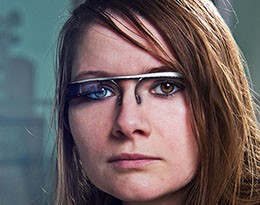
Wearable Technology was born in Hollywood, from iris recognition software in “Minority Report” to James Bond’s smart watch boasting a tracking device and TV screen in “Octopussy.” However it now seems you no longer need to be a movie star to be able to own this type of tech.
2014 has been christened “The Year of the Wearable” as many of the biggest tech conferences have been flooded with this new and innovative technology. However is this statement premature or should brands and marketers start preparing as this technology will shape the future of communication?
From Sportswear to Eyewear
The advent of wearable tech kick-started when Nike and Apple teamed up in 2006 to create a sports kit that allowed users to sync their movements to their iPod. Nike+ was born and since then they have continued to develop and update the platform by introducing an app, sportswatch and sportsband. As a result today the Nike+ community is over 18 million.
With the success of Nike+ it came as no surprise when Google released “Google Glass” last year. Power is in the eye of beholder with this piece of tech, in essence a wearable computer that delivers smartphone information into a screen above your right eye. It hasn’t been without its problems though as concerns over privacy and usability have surfaced. For now it’s still a work in progress.
The next iteration of the tech, and certainly a much more accessible version is the smart watch which is shaping up to be another battle between Apple and Google. Apple’s heavily rumoured iWatch will have built-in sensors to monitor health and is expected to be released later this year. While Google recently announced Android Wear, an operating system designed for smart watches. The technology implements several key features in the wearable market today and some already present on its Google Glass headsets, such as such as voice controls, reminders, fitness monitoring and mapping. Motorola will be the first company to adopt the new OS tech with a Moto 360 smart watch available in the summer. With health and fitness a key feature of the device maybe those gym memberships will start getting some use.
Early adopter accessory or mainstream must-have?
It’s still early days as based on a recent AIMIA report only 12 percent of Aussies intend to purchase wearable technology in the next 12 months. However the rate at which Aussies have taken up smart technology, over 68 percent smartphone penetration and 40 percent of households now owning a tablet, it seems only a matter of time before they wearable tech is the next must-have. Although the speed of uptake will in part be dependent on how the key mobile operators embrace it and when Apple move into the market as technological development can’t drive it on its own.
What it means for brands and marketers
Brands in Australia have already started preparing for wearable tech. Telstra will launch one of the worlds’ first Google Glass sports apps next season. The AFL Glassware app will give fans access to live match commentary, scores and player stats while they watch the game in what promises to be a truly immersive sports experience.
I’m sure FMCG brands will see the potential of the tech too. For instance a consumer could pick up a beef fillet in the supermarket, Google Glass or the iWatch would scan the product and it would then direct to you to complementary products along with different recipes you can make and what you will need to create it – no more scanning of QR codes or downloading apps.
Smart watches will offer sophisticated personal tracking technology for advertisers. For example a health insurer could run a rewards program that assigns points to members based on how many steps they make each day. However on the flipside there are concerns over privacy and how brands would be able to use data collected on users to increase their profits. Imagine your health insurer by being able to track your exercise habits then charging you extra if you don’t reach your targets – a scary and expensive thought.
Wearable tech it seems is here to stay but it will require brands and marketers to invest and innovate with these devices if they are to reap any benefits. It won’t be about brands creating their own wearable tech but instead looking at ways to best tap into consumer behaviour across these devices so that they add real value and utility. The winners will be those that create engaging consumer-centric content both suited to the screen space and functionality of the devices.
For now it’s a case of watch this (body) space.
Russell Dowse is communications director at Match Media.